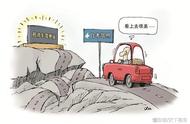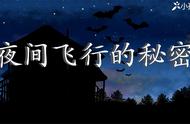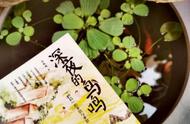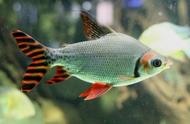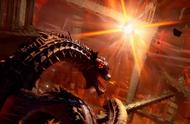Saving the night sky: New Zealand's craziest experiment yet?
保护夜空:新西兰最疯狂的实验?

The Pacific nation's audacious bid to become the world's first dark sky nation might provide a blueprint for the rest of the world.
这个太平洋国家大胆争取成为世界上第一个黑暗天空国家,这可能为世界上其他地区提供了一个蓝图。
If Becky Bateman had to pick just one star out of the 3,000 you can typically see in the New Zealand night sky, she'd pick Arcturus, the brightest star in the Boötes constellation. It shines orange, for one thing. And, because of that, is statistically most likely to have life orbiting around it.
如果贝基·贝特曼(Becky Bateman)必须从新西兰夜空中通常能看到的3000颗恒星中选出一颗,她会选择大角星,博茨星座中最亮的恒星。首先,它发出橙色的光芒。正因为如此,从统计上看,最有可能有生命围绕它运行。
Most nights for the past two years, the astronomy guide has used a green laser pointer and collapsible Dobsonian telescope to show people around the night skies of the Wairarapa, a rural wine region in the south-eastern corner of the North Island. Year-round, the nomadic guide meets people in public parks, backyards and on the wild beaches of the South Wairarapa coast. During New Zealand's clement summer months, as wine tourism peaks, she can be found waving her pointer, like a Jedi, high above the bushy, green vines of the region's popular vineyards surrounded by stargazers sipping pinot noir.
过去两年的大多数夜晚,《天文学指南》都使用绿色激光指针和可折叠的多布森望远镜,向人们展示怀拉帕的夜空。怀拉帕是北岛东南角的一个乡村葡萄酒产区。一年到头,游牧向导都会在公园、后院和南怀拉帕海岸的野生海滩上与人们见面。在新西兰克莱门特(clement)夏季的几个月里,随着葡萄酒旅游的高峰期,人们可以看到她像绝地武士一样挥舞着她的指针,高高地举着该地区著名葡萄园茂密的绿色葡萄藤,周围围着观星者啜饮黑比诺。
Tours begin with an introduction to the Southern Cross and Milky Way and generally extend to chat about the origin of the universe and the fleeting time in which humans have occupied planet Earth. These days, as one of the Wairarapa's leading voices on the benefits of stargazing, Bateman is just as likely to end up urging guests to get behind the country's bid to protect the night sky. To her, a clear night's sky free from light pollution is one of the last wilderness frontiers facing the threat of extinction – and now is the time to act.
旅行以介绍南十字星和银河系开始,通常延伸到谈论宇宙起源和人类占领地球的短暂时间。如今,作为瓦伊拉帕人关于观星好处的主要声音之一,贝特曼也很可能最终敦促宾客支持该国保护夜空的努力。对她来说,没有光污染的晴朗夜空是面临灭绝威胁的最后一片荒野——现在是采取行动的时候了。
Bateman is not alone in thinking this way. In late 2019, the Pacific nation announced a plan to become the world's first dark sky nation at the New Zealand Starlight Conference in Tekapo. Conference delegates from around the world were concerned about the world's increasing light pollution and its proven negative effects on human health and nocturnal wildlife but were heartened by the exceptional quality of starry nights in New Zealand and the country's growing appetite for dark sky conservation. They agreed the plan was audacious but believed if New Zealand could pull off such a crazy experiment, it just might provide a blueprint for the world.
贝特曼并不是唯一一个这样想的人。2019年末,这个太平洋国家在特卡波的新西兰星光会议上宣布了成为世界上第一个黑暗天空国家的计划。来自世界各地的会议代表对世界日益严重的光污染及其对人类健康和夜间野生动物的负面影响表示担忧,但新西兰星夜的异常质量以及该国对暗天空保护的日益增长的兴趣让他们感到振奋。他们同意这个计划是大胆的,但相信如果新西兰能完成这样一个疯狂的实验,它可能会为世界提供一个蓝图。

惠蒂马努卡疗养地
Well-positioned for stargazing, Whitimanuka Retreat in the Wairarapa is kitted out with binoculars and books on what to see in the night sky 怀拉拉帕的惠蒂马努卡疗养地位置优越,适合观星,配备了双筒望远镜和关于在夜空中看到什么的书籍
On a recent winter evening, Bateman set up her telescope on the frosty porch of Whitimanuka Retreat. I'd hired her to join me at an off-grid cabin I'd rented in the hills of a working sheep and beef farm about an hour's drive from my hometown of Wellington.
不久前的一个冬夜,贝特曼把望远镜放在惠蒂马努卡疗养地结了霜的门廊上。我雇了她,让她和我一起住在一个离我家乡惠灵顿大约一小时车程的羊和牛肉农场的山里,我租了一间离电网不远的小屋。
As the clouds cleared, Bateman unpacked and assembled her manual telescope, laid out half a dozen glass jars hand-painted red and filled with fairy lights (to subtly light our way while not obliterating our night vision) and set to work revealing the evening's constellations. Minutes into a description of where to find the Southern Cross (first, look for a kite-shaped constellation in the Milky Way), a shooting star flew across the sky.
当云层散去时,贝特曼打开并组装了她的手动望远镜,摆出六个手工涂成红色的玻璃罐,里面装满了神灯(在不破坏夜视的情况下微妙地照亮我们的道路),并开始揭示夜晚的星座。在描述在哪里可以找到南十字星座(首先,在银河系中寻找一个风筝形状的星座)的几分钟后,一颗流星飞过天空。
To me, the dark skies are humankind's last true natural wilderness. Potentially, they won't be with us in years to come.
对我来说,黑暗的天空是人类最后一片真正的自然荒野。很可能,他们在未来几年内不会与我们在一起。
"Oh, wonderful. Did you see that?" asked Bateman enthusiastically. "I see 10 or so shooting stars every few hours I'm out here. Lately, though, I'm seeing more and more man-made pollution like Elon Musk's SpaceX satellite. To me, the dark skies are humankind's last true natural wilderness. Potentially, they won't be with us in years to come. It worries me – there's so much to lose in the world's obsession with space tourism and so many reasons to preserve what's here."
“哦,太好了。你看到了吗?”贝特曼热情地问道。“我在这里每隔几个小时就会看到10颗左右的流星。不过,最近,我看到越来越多的人为污染,比如埃隆·马斯克的SpaceX卫星。对我来说,黑暗的天空是人类最后一片真正的自然荒野。它们可能在未来几年里不会与我们在一起。这让我担心——世界对它的痴迷会让我失去太多东西。”太空旅游和许多保护这里的理由。"
When it comes to dark sky preservation on the world stage, the International Dark-Sky Association (IDA) is the organisation responsible. Set up in 1988, it runs a dark sky conservation programme that recognises the quality of the world's dark skies using a five-pronged certification system. Within the system, dark sky sanctuaries rank highest as the most remote and often darkest places in the world, followed by reserves, parks, communities and urban night sky places.
说到在世界舞台上保护黑暗天空,国际黑暗天空协会(IDA)是负责的组织。它成立于1988年,运行着一个黑暗天空保护计划,通过五管齐下的认证体系来认可世界黑暗天空的质量。在这个系统中,黑暗天空保护区是世界上最偏远、最黑暗的地方,排名最高,其次是保护区、公园、社区和城市夜空场所。
To achieve IDA certification, a dark sky must meet a range of criteria, including protection from light pollution, accessibility to visitors and wide-ranging support from residents.
要获得IDA认证,黑暗的天空必须符合一系列标准,包括防止光污染、游客的可及性以及居民的广泛支持。

库克山湖边静修天文台的望远镜
The six-inch refractor telescope at Mount Cook Lakeside Retreat's observatory can be fitted with a DSLR camera for astrophotography 库克山湖边静修天文台的6英寸折射望远镜可以安装用于天体摄影的单反相机
In 2012, New Zealand's Aoraki Mackenzie community successfully applied to the IDA to become an accredited dark sky reserve. An inland plain region about 180km south-west of Christchurch, where large country sheep stations have been the norm for more than a century, Aoraki Mackenzie is rugged, isolated country dominated by mountain and lake scenery.
2012年,新西兰的Aoraki Mackenzie社区成功地向国际开发协会申请成为认可的黑暗天空保护区。Aoraki Mackenzie位于克赖斯特彻奇西南约180公里处的内陆平原地区,一个多世纪以来,大型乡村牧羊站一直是这里的常态。Aoraki Mackenzie是一个崎岖、与世隔绝的国家,山峦和湖泊风光占主导地位。
Today, Aoraki Mackenzie's 4,300sq km dark reserve is the only one of its kind in the Southern Hemisphere and just one of 18 in the world. Two New Zealand communities, Great Barrier Island and Rakiura Stewart Island, have since become sanctuaries, with Wai-iti, a 135-hectare hunk of council land in Tasman District, now an IDA-certified dark sky park. Another 20 New Zealand dark sky communities – including the Wairarapa — are looking to follow suit and gain some form of certification.
如今,Aoraki Mackenzie拥有4300平方公里的黑暗保护区,是南半球唯一的一处此类保护区,也是世界上18处保护区之一。自那以后,新西兰的两个社区——大堡礁岛和拉基乌拉·斯图尔特岛(Rakiura Stewart Island)成为了保护区,塔斯曼区的一块135公顷的议会用地Wai iti现在是IDA认证的黑暗天空公园。另外20个新西兰黑暗天空社区——包括Wairarapa——正在寻求效仿并获得某种形式的认证。
In 2019, it was Dark Skies Group Director at the Royal Astronomical Society of New Zealand, Steve Butler, who daringly announced the country's plans to become the world's first dark sky nation. "It was more of an aspirational rather than a hard-and-fast goal," he told me recently. "The IDA doesn't yet have an official dark sky nation designation. But when it does New Zealand will be first in line."
2019年,新西兰皇家天文学会黑暗天空小组主任史蒂夫·巴特勒大胆宣布了该国成为世界上第一个黑暗天空国家的计划。“这更像是一个雄心勃勃的目标,而不是一个艰难而快速的目标,”他最近告诉我。“国际开发协会还没有一个正式的黑暗天空国家的名称。但当它这样做时,新西兰将排在第一位。”
"Are we obsessed as a people? Probably. We're definitely uniquely advantaged," he explained. "Look, Kiwis are an outdoor people with easy access to the natural dark skies of the Southern Hemisphere. Very few of us have grown up without being awed by New Zealand's night skies, particularly those you see in national parks like Aoraki Mackenzie or Rakiura Stewart Island. Sure, not all of us know how to find the Southern Cross, but we're a far cry from 80% of the world's population who can't even see the stars of the night sky."
“作为一个民族,我们被迷住了吗?可能吧。我们绝对是独一无二的优势,”他解释道。“你看,新西兰人是一个户外民族,很容易进入南半球自然黑暗的天空。我们中很少有人在成长过程中不会对新西兰的夜空感到敬畏,尤其是你在Aoraki Mackenzie或Rakiura Stewart Island等国家公园看到的夜空。当然,我们不是所有人都知道如何找到南十字星,但我们是一个普通人。”世界上80%的人口甚至看不到夜空中的星星,他们都在哭泣。"
That's why when New Zealanders were asked to comply with the IDA's rigorous requirements to restrict outdoor lighting and switch to low-powered yellow lighting in regions such as Aoraki Mackenzie and elsewhere, by-and-large they were up for it, Butler explained. It's why Butler is confident even the country's urban centres, over time, will find ways to limit artificial light spilling into natural areas and reduce light use generally. It's also why more and more New Zealanders are joining the global chorus to save the world's night skies.
巴特勒解释说,这就是为什么当新西兰人被要求遵守国际开发协会的严格要求,在奥拉基·麦肯齐和其他地区限制户外照明,并改用低功率的黄色照明时,他们基本上是接受的。这就是为什么巴特勒相信,随着时间的推移,即使是美国的城市中心,也会找到方法来限制人造光进入自然区域,并普遍减少光的使用。这也是为什么越来越多的新西兰人加入全球合唱团,拯救世界的夜空。

全球人造光每年至少以2%的速度增长
Data cited by the United Nations Environment Programme suggests artificial light is increasing globally by at least 2% every year 联合国环境规划署引用的数据表明,全球人造光每年至少以2%的速度增长
Every two years, for example, New Zealand hosts the New Zealand Starlight Conference attracting hundreds of dark sky proponents from overseas and around the country. Dark sky associations eager to achieve IDA status are sprouting from Kiwi townships like weeds. Local mayors are talking about changing national planning and building regulations to keep lighting low. Even government entities like Waka Kotahi, New Zealand's transport agency, are looking to install IDA-compliant lighting on state highways that fall within dark sky areas.
例如,新西兰每两年举办一次新西兰星光会议,吸引来自海外和全国各地的数百名黑暗天空支持者。渴望获得国际开发协会(IDA)地位的黑暗天空协会像杂草一样从猕猴桃镇上萌芽。当地市长正在讨论改变国家规划和建筑法规,以保持低照明。就连像新西兰交通机构Waka Kotahi这样的政府实体也在寻求在黑暗天空区域内的州际公路上安装符合IDA标准的照明设备。
Some New Zealanders, like Kaye and Luke Paardekooper, owners of Mount Cook Lakeside Retreat, have taken matters into their own hands. In 2015, the pair added a wine cellar and observatory to their 66-hectare luxury resort on the clifftop of Lake Pūkaki in Aoraki Mackenzie.
一些新西兰人,比如库克山湖边度假酒店的所有者凯和卢克·帕德库珀,已经把事情掌握在自己手中。2015年,这对夫妇在Aoraki Mackenzie的Pūkaki湖悬崖顶上的66公顷豪华度假村中增加了一个酒窖和一个观景台。
Initially, it was aimed at overseas tourists wanting an intimate, upmarket astrotourism experience to complement the kind of larger group tour they might experience at the Dark Sky Project. Based in the nearby township of Tekapo, the Dark Sky Project promotes the dark skies of the region, sharing both Māori and Western ideas about astronomy, and taking visitors to the University of Canterbury Mt John Observatory.
最初,它的目标是希望获得亲密的高端太空旅游体验的海外游客,以补充他们可能在黑暗天空项目中体验的大型团体旅游。基于TekPao附近的小镇,黑暗天空计划促进了该地区的黑暗天空,分享了米奥里和西方关于天文学的想法,并带游客参观了坎特伯雷大学约翰山天文台。
But the couple admit they too love to rug up, open the roof and simply gaze at the quiet blackness overhead. The ability to do that is what they want to hold on to.
但这对夫妇承认,他们太喜欢穿上毯子,打开屋顶,只是盯着头顶安静的黑暗。这样做的能力是他们想要坚持的。
The kind of sleep you get here, particularly during the long nights of winter, honestly, is second to none.
老实说,你在这里得到的睡眠,尤其是在冬天的长夜,是首屈一指的。
On a recent overnight stay, Kaye told me the country's bid for dark nation status, to them, was about much more than the likely boost to tourism. "Dark skies are great for wellbeing – that's what we tell anyone who'll listen. Research by the Royal Society [of New Zealand] on the effects of blue light, for example, shows too much blue light at the wrong time of day can disrupt our sleep, our immunity, our hormonal balance and even our mood," said Kaye, who's spent more than six years on her local dark sky association board.
在最近的一次过夜旅行中,凯告诉我,对他们来说,该国争取黑暗国家地位的努力远不止可能促进旅游业的发展。凯伊说:“黑暗的天空对健康非常有益——这是我们告诉任何愿意倾听的人的。例如,新西兰皇家学会(Royal Society of New Zealand)关于蓝光影响的研究表明,在一天中的错误时间过多蓝光会扰乱我们的睡眠、免疫力、激素平衡,甚至情绪。”,她在当地的黑暗天空协会董事会工作了六年多。
"We don't have that light pollution here, which is why it needs preserving. Without the dominance of blue light, it's much easier to return to your natural circadian rhythms. The kind of sleep you get here, particularly during the long nights of winter, honestly, is second to none."
“我们这里没有光污染,这就是它需要保存的原因。没有蓝光的主导,你就更容易恢复自然的昼夜节律。老实说,你在这里得到的睡眠,尤其是在冬天的长夜,是首屈一指的。”

黑暗天空项目
The Dark Sky Project promotes the dark skies of the region and shares both Māori and Western ideas about astronomy 黑暗天空项目促进了该地区的黑暗天空,并分享了毛利人和西方对天文学的看法
For Aoraki Mackenzie Dark Sky Reserve Board member Victoria Campbell, of Ngāi Tahu tribal descent, the country's growing obsession with the night sky is encouraging for other reasons.
对奥拉基·麦肯齐(Aoraki Mackenzie)黑暗天空保护区董事会成员维多利亚·坎贝尔(Victoria Campbell)来说,这个国家对夜空越来越着迷,还有其他原因令人鼓舞。
"It's made Kiwis curious about their night sky heritage and the cultural traditions that underpin it," she said. "New Zealanders come from a long line of astronomers, starting with Polynesian explorers like Rākaihautū who discovered Aotearoa (New Zealand) in an ocean-going waka (canoe) using the stars, sun and moon. British explorer James Cook used the same night sky to get here. In pre-colonial times, Māori used a unique calendar — one that began each year with the rising of the Matariki star cluster — to reflect on the year that had gone and plan for the year ahead."
她说:“这让新西兰人对他们的夜空遗产和支撑它的文化传统感到好奇。”。“新西兰人来自一长串天文学家,首先是像Rākaihautū这样的波利尼西亚探险家,他们在一艘远洋独木舟上发现了新西兰的奥特罗亚利用星星、太阳和月亮。英国探险家詹姆斯·库克利用同样的夜空来到这里。在前殖民时代,毛利人使用了一种独特的日历——每年都以马塔里基星团的升起开始——来反思过去的一年,并计划下一年。"
On 24 June 2022, thanks to a 2020 pre-election promise by Prime Minister Jacinda Ardern, New Zealanders will celebrate Makariki – the mid-winter constellation that marks the Māori New Year – as a public holiday for the first time. About an hour before sunrise, people from all walks of life will come together, remember loved ones who have passed and look to the stars for hope and inspiration before sharing kai (food) and a hot cup of tea.
2022年6月24日,由于总理雅辛达·阿登在2020年大选前的承诺,新西兰人将首次将标志毛利人新年的隆冬星座马卡里基庆祝为公共假日。日出前约一小时,各行各业的人们将聚集在一起,缅怀逝去的亲人,在分享佳肴和一杯热茶之前,向星星寻求希望和灵感。
For many, like Campbell, the revival of Matariki may be the country's boldest, best expression of dark sky nationhood yet.
对许多人来说,像坎贝尔一样,马塔里基的复兴可能是这个国家迄今为止最大胆、最好的黑暗天空国家形象的表现。



